 [[{“value”:”
[[{“value”:”
Despite the furor over government job cuts, tariff chaos, and what not.
By Wolf Richter for WOLF STREET.
The labor market accelerated in March, after the moderate growth in January and February, despite the job reductions at the federal government, despite the chaos and uncertainty on trade, despite the sour mood of consumers that nevertheless spent like drunken sailors on new vehicles in Q1, despite all the things in the media to scare the bejesus out of everyone.
Total nonfarm payrolls in March jumped by 228,000 from the prior month, blowing past an entire range of projections, to 159.4 million, according to the Bureau of Labor Statistics today (blue columns in the chart).
The three-month average job creation, which includes the revisions and irons out some of the month-to-month squiggles, declined to 152,000 jobs, which is in solid territory (red line).
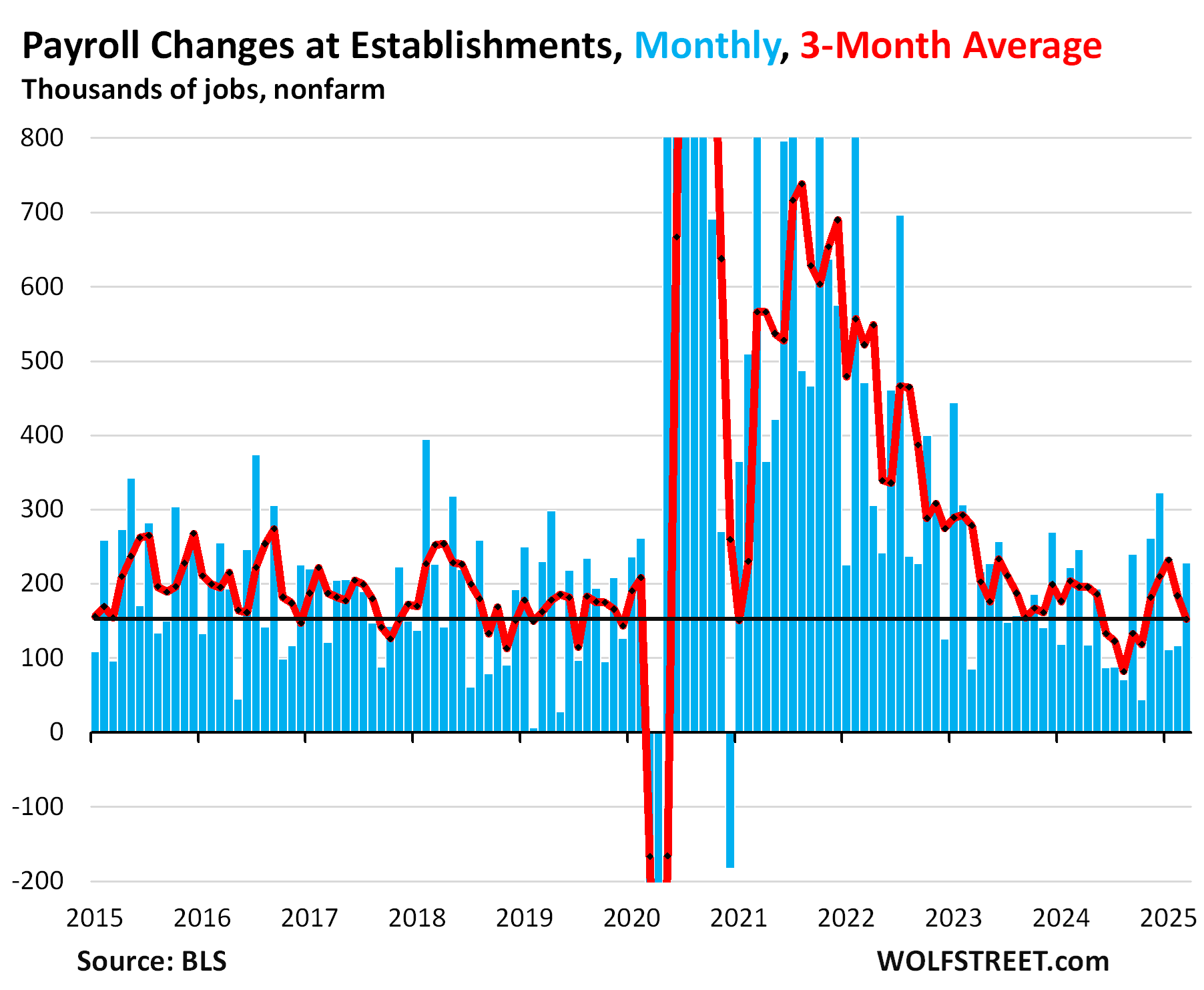
Civilian employment at the federal government – which accounts for less than 1.9% of total nonfarm payrolls – dipped in March by 4,000 to 3.0 million workers, after having declined by 11,000 in the prior month, bringing the two-month decline to 15,000.
This doesn’t yet capture the full effects of the job cuts so far: Workers on paid leave or receiving severance pay are counted as employed until they stop being paid, the BLS pointed out.
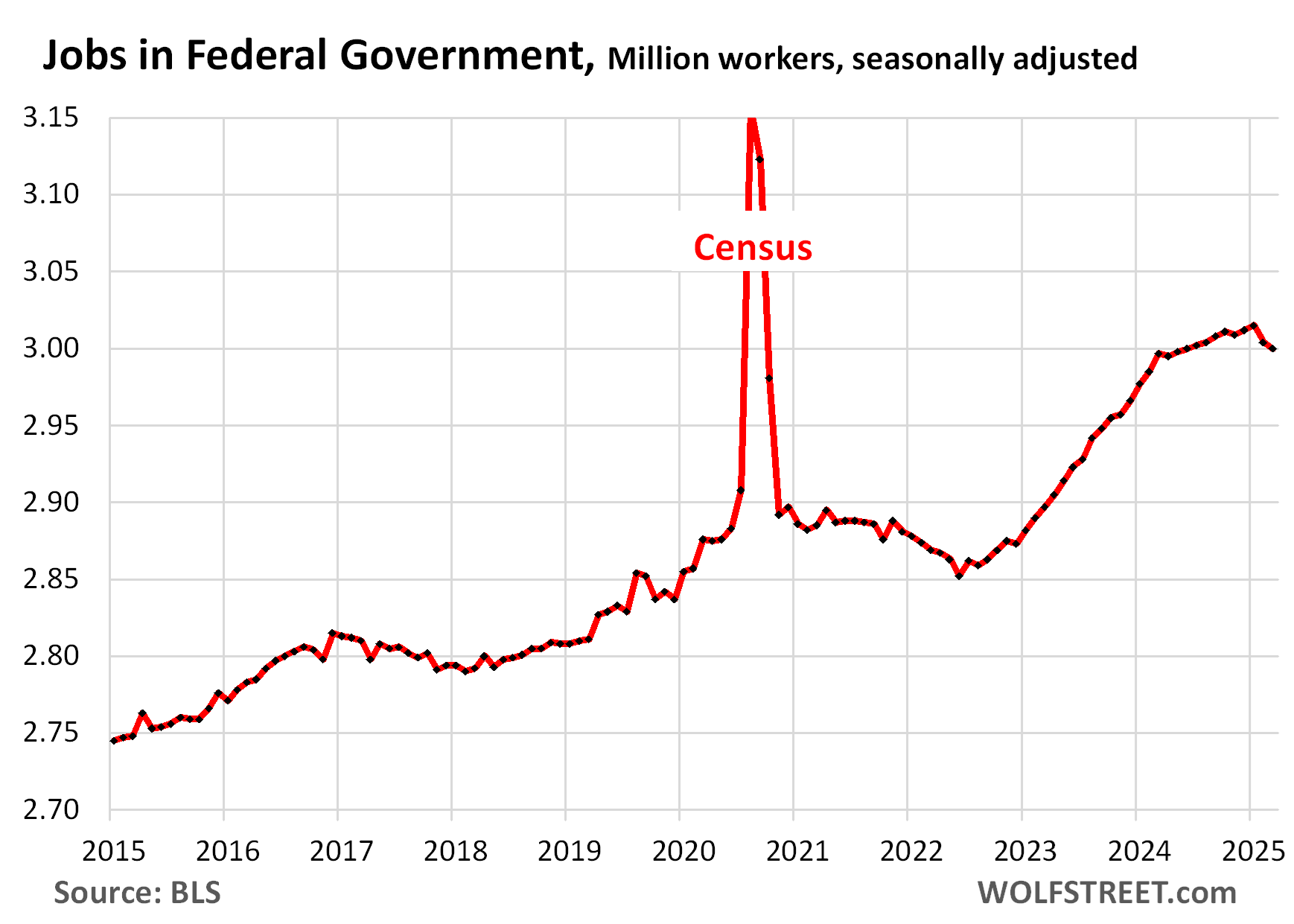
This relatively low ratio of federal government payrolls (3.0 million) to total nonfarm payrolls (159.2 million) indicates that the job cuts at the federal government, once they show up to the full extent, won’t make a major dent in overall employment.
This does not include employees working for companies that have contracts with the government. Their employees fall under the various nongovernment categories, such as “Professional and business services,” where employment has actually increased over the past two months despite some layoffs at big government contractors.
In March, this ratio of civilian government employment to total nonfarm payrolls dipped to 1.89%:
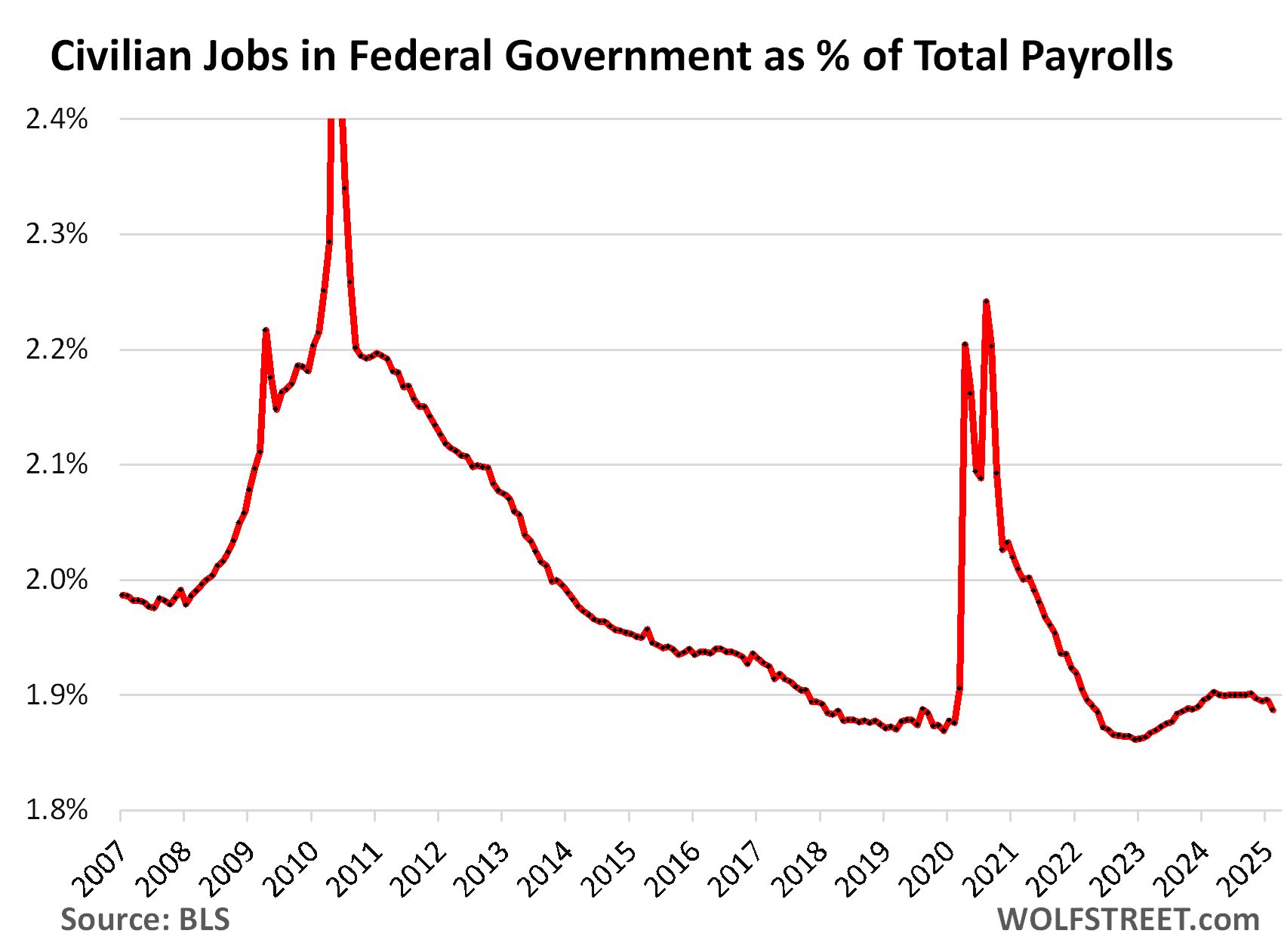
Average hourly earnings rose by 0.25% in March from February (+3.0% annualized), a slight acceleration from February but a deceleration from the hot increase in January of 0.42% (5.2% annualized).
The three-month average rose by 3.6% annualized, a slight acceleration from the prior month (red line).
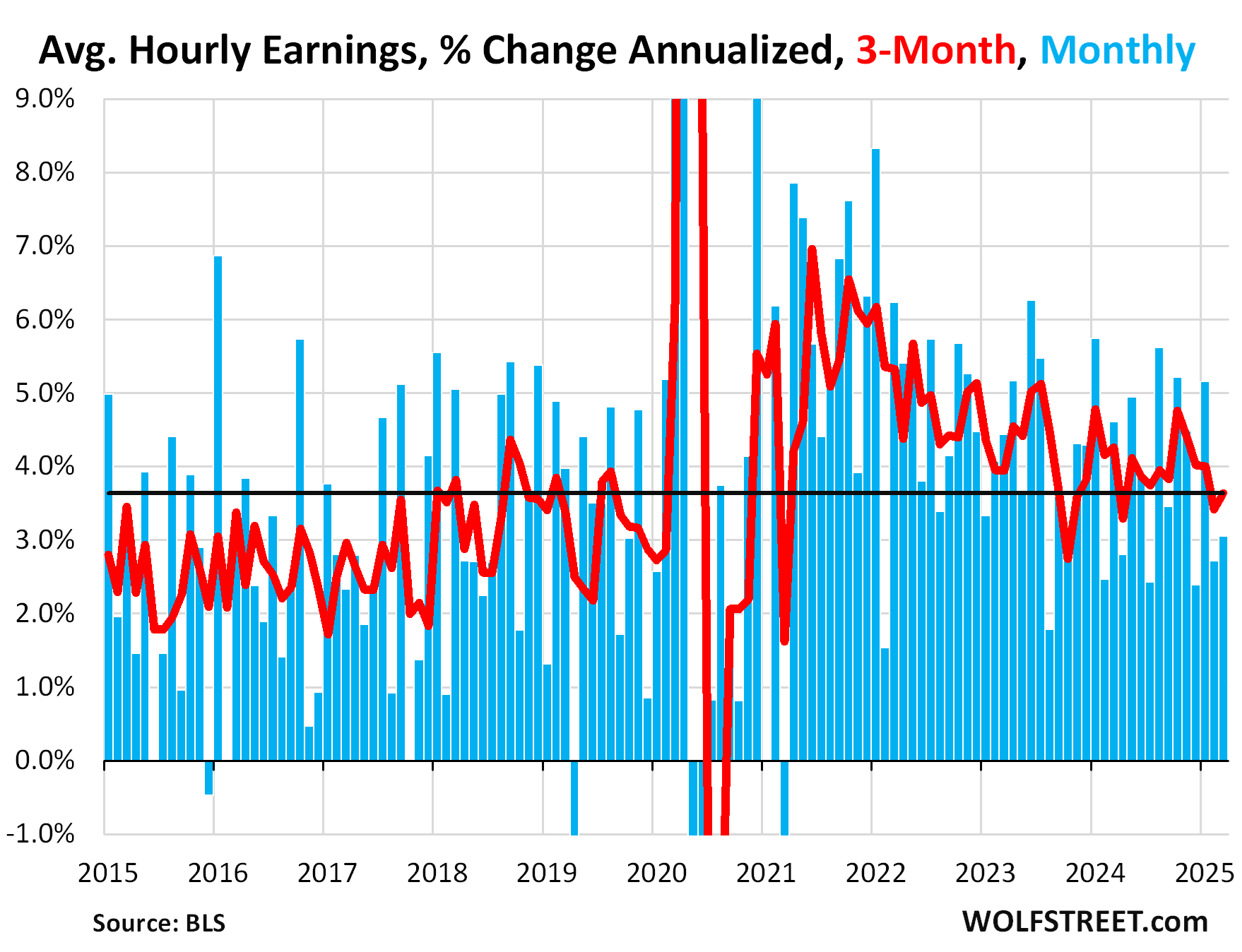
Year-over-year, average hourly earnings rose by 3.8% in March, after having increased in the 4.0% range in the prior three months.

Unemployment ticked up by 31,000 to 7.08 million people who were actively looking for a job during the survey period, according to the BLS household survey today. Unemployment has been in this range since July.
The three-month average rose by 66,000 to 6.99 million and has also been in this range since July (red)
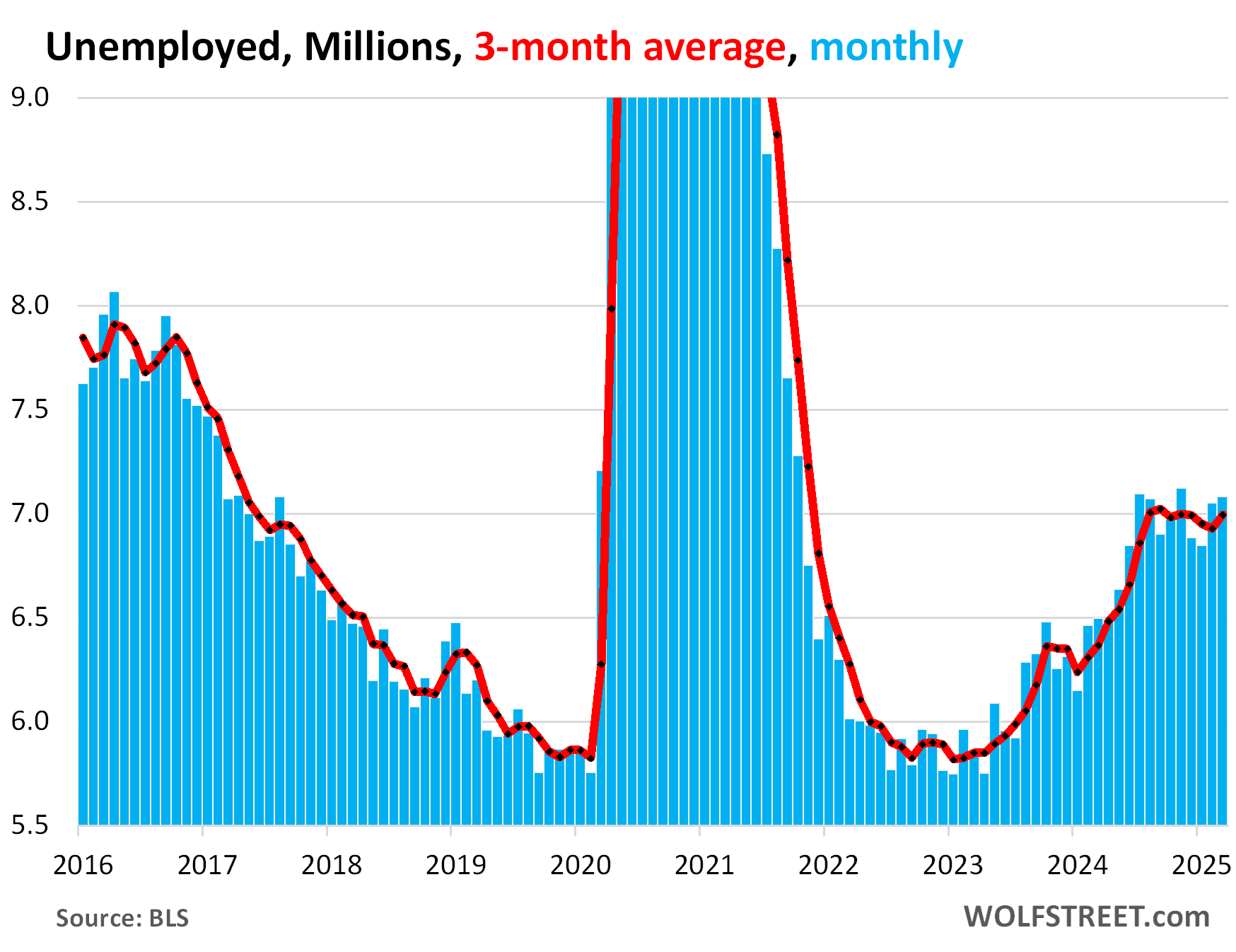
The headline unemployment rate (U-3) edged up to 4.152% (rounded to 4.2%) in March from 4.139% (rounded to 4.1%) in February. The actual increase of 1.3 basis points ended up looking like a 10-basis-point increase due to the effect of rounding.
Over the past 10 months, the unemployment rate has stabilized at the historically low range of 4.0% to 4.2%, with July having been the high point (4.22%) and January the low point (4.01%).
The unemployment rate = number of unemployed people who are actively looking for a job divided by the labor force (number of working people plus the number of people who are actively looking for work).
An unemployment rate of 4.2% is historically low, and a sign of a solid labor market, and below the Fed’s median projection at the March meeting of 4.4% for the end of 2025:

The Fed faces a peculiar mix of a solid labor market, inflation that has been accelerating for six months, uneven economic growth, and tariff chaos that it fears may add to persistent inflation as businesses and consumers expect higher prices in future years, thereby adjusting to higher prices – the “inflationary mindset,” as I call it – causing inflation expectations to become “unanchored,” which is one of the ingredients thought to allow higher inflation to fester. So Powell was fairly hawkish today, focused on inflation. And in this scenario, it seems markets may have to learn to stand on their own two feet?
Enjoy reading WOLF STREET and want to support it? You can donate. I appreciate it immensely. Click on the mug to find out how:
![]()
The post The Stock Market May Be in Trouble and Consumers May Be in a Sour Mood, But the Labor Market Is Just Fine appeared first on Energy News Beat.
“}]]

